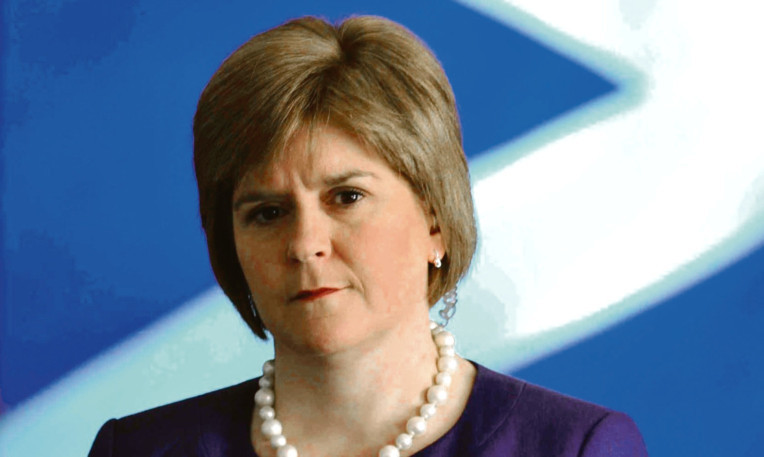
We’re now, at last, getting down to the nitty-gritty of what independence would mean, on a practical level, for most Scots.
And the latest issue which Alex Salmond, and others in the Yes Scotland camp are being forced to answer, is what currency an independent Scotland would use.
The SNP’s position is that Scotland would continue to use the pound sterling.
The move to sterling, of course, is a shift in the SNP’s position, as they were once keen on joining the euro.
But this option, thanks to the bad publicity the European currency is suffering, is not politically acceptable at present.
This is despite the fact the euro is currently in a far stronger currency exchange position than sterling.
Of course, in changing their minds about the euro, the SNP aren’t alone it was once the choice of Labour and the Lib Dems.
But the argument over currency is complicated by the fact that not all on the Yes side agree.
The Greens, and some in the SNP, are now floating the idea of a separate Scots currency. After all, countries of a similar size, such as Denmark, have their own currencies.
Claims that Scotland, if it wanted to join the EU, would be forced to join the euro, are also spurious.
All that accession countries are asked to agree to is a commitment, at some time in the future, to join.
In reality, recent accession countries such as the Czech Republic have simply kept their own currency, and show no signs of joining the euro club.
The currency issue was raised last week, when Chancellor George Osborne visited Scotland to warn that a currency union between Scotland and the UK was unlikely.
The Chancellor’s intervention, however, was welcomed by the SNP, who pointed out that Better Together chief and former Labour Chancellor, Alistair Darling, had claimed that nothing Mr Osborne said had any credibility.
Scotland could, of course, use the pound on an informal basis, in the same way as some countries use the US dollar.
However, that option would leave Scotland with no influence on monetary policy whatsoever, and the country would have no central bank lender of last resort.
Scottish Lib Dem leader Willie Rennie claimed there was panic in the SNP ranks over this issue.
“They’re beginning to understand that if you slam the door in someone’s face, they can to lock the door from their side,” he said.
“Scots will understand that the only guaranteed way of keeping the pound is to stay in the UK.”
Scottish Conservative Finance spokesman Gavin Brown agreed.
“What’s clear, despite the mutterings of the SNP, is that there has been little or no contact with the Treasury or the Bank of England about their preferred currency option under separation,” he said.
“With just under a year and a half to the referendum vote, it is quite staggering that the SNP has not bothered to ask how this could work in practice.
“It does not matter how often the SNP say they want such an arrangement, if the other side does not want to deal then it will not happen.”
However, Deputy First Minister Nicola Sturgeon hit back at the claims by the Chancellor and other Opposition spokesmen. She pointed out that the Chancellor was a member of the UK Government, which was against independence.
“And it’s in his interest to imply that an independent Scotland wouldn’t be able to use the pound,” she added.
“By contrast, the experts on the Fiscal Commission Working Group have no axe to grind.
“They took a detailed, exhaustive look at the various options that would be open to an independent Scotland and concluded that staying part of a sterling zone would be the best option for Scotland and for the rest of the UK.
“They also concluded that, notwithstanding the fiscal discipline that this option, and indeed any other currency option would require, independence within a sterling zone would give Scotland substantial economic levers to grow our economy that we simply do not have at present.”
And from the SNP’s point of view, retaining the pound would remove one of the fears many Scots have about the leap to independence.
This is my final column before my retirement. I hope my successor, Andrew Picken, formerly political editor of the Scottish Mail On Sunday, has as many good times as I’ve had.

Enjoy the convenience of having The Sunday Post delivered as a digital ePaper straight to your smartphone, tablet or computer.
Subscribe for only £5.49 a month and enjoy all the benefits of the printed paper as a digital replica.
Subscribe